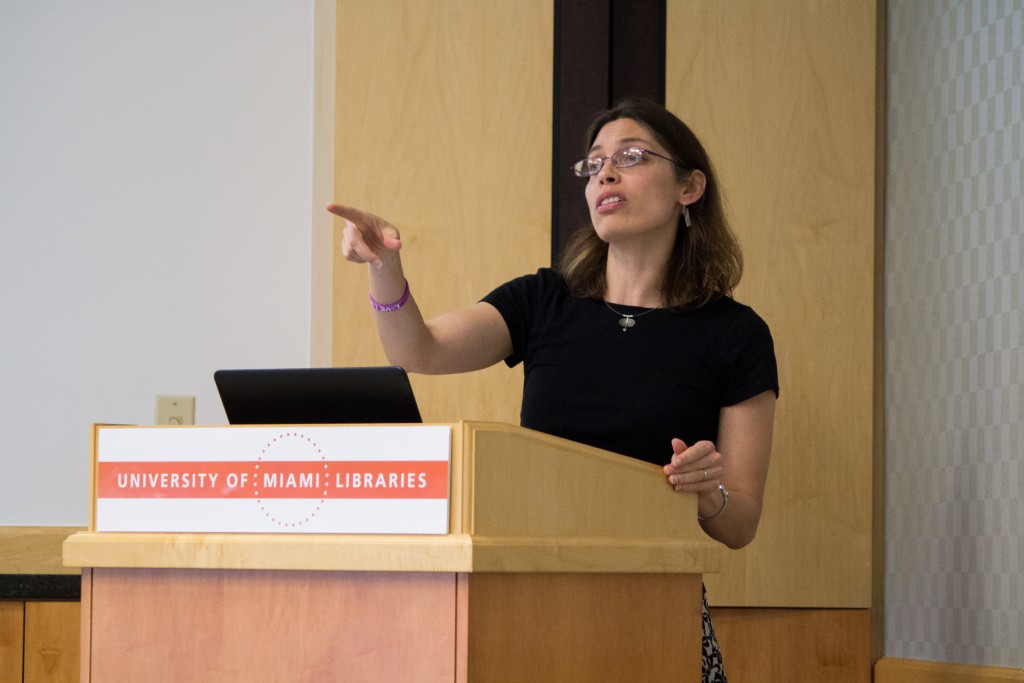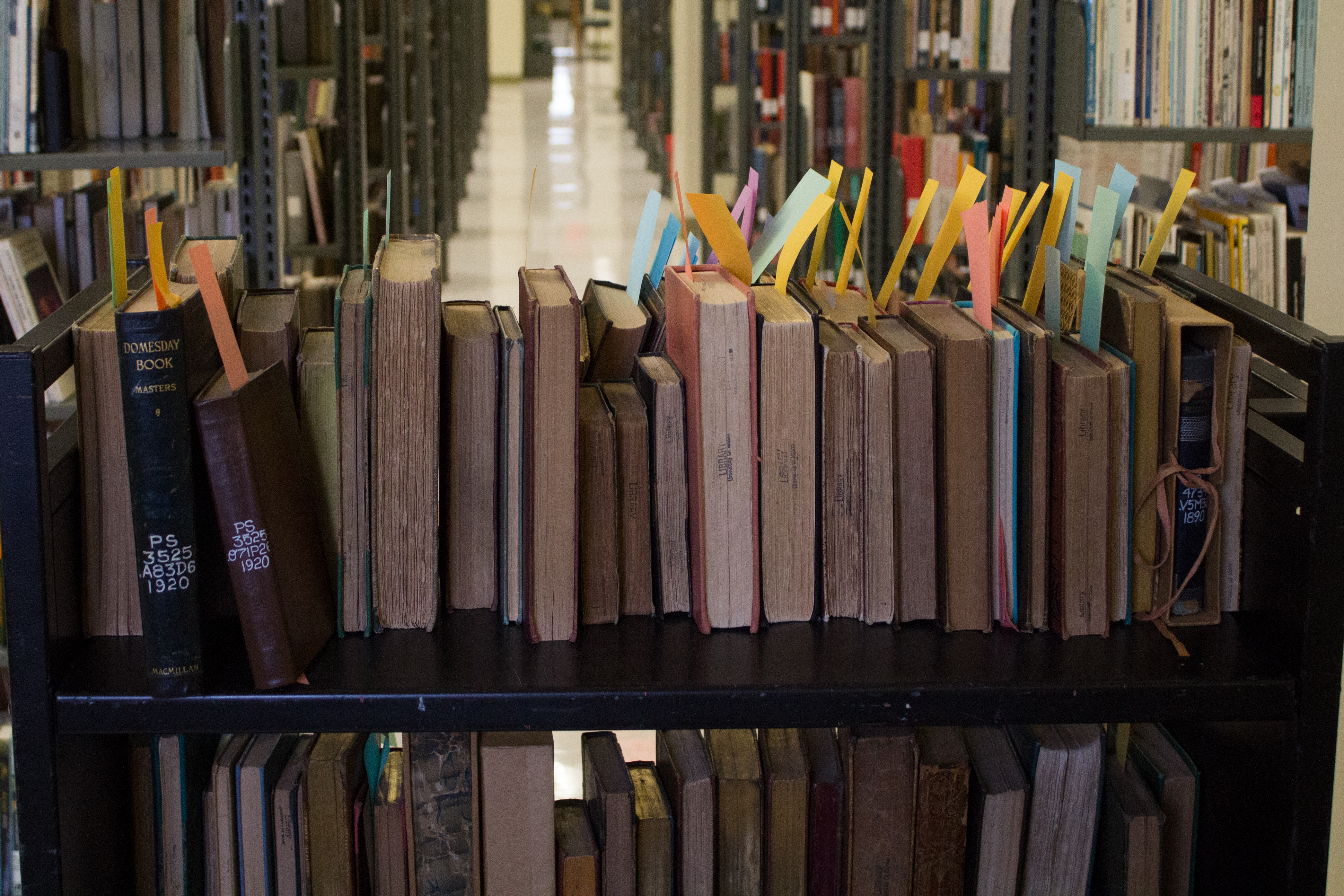
The Otto G. Richter Library held its first Book Traces event last Thursday, encouraging attendees to look between the pages of books for the “hidden treasures” left behind by past readers.
Book Traces first began at the University of Virginia (UVA) as a nationwide crowdsourcing project that aims to preserve information about unique copies of library books. Like a treasure hunt, Book Traces is about discovering pieces of the past left within old volumes. Searchers discover that past readers have left their writing, pictures, letters, flowers and other items between the pages.
Throughout the day, the library opened up the Stacks and invited students to participate in the search. There were also discussions led by Andrew Stauffer and Kara McClurken of the Book Traces project. Stauffer is the director of “NINES” at UVA, which focuses on digitizing and preserving 19th-century print, and McClurken is the director of preservation services at UVA and a principal investigator on the grant that funds Book Traces.
“Book Traces is a project to get students to think about the book as an object and not just a source of textual information,” said Special Collections Librarian Jay Sylvestre, who helped organize the event. “All the parts of a book, from the cover, to the illustrations, to any notes added by readers, tells us a story. Book Traces helps students find and follow that story.”
Marginalia, the unique markings and objects of readers’ past, was documented and uploaded to the Book Traces webpage. By finding and identifying unique books and their stories, they can be protected from being discarded as libraries become increasingly digital.
“There is a long history of marginalia and annotation going all the way back to the first written manuscripts,” Sylvestre said. “Special Collections has books dating all the way back to the 15th century that resemble the marginalia we are finding here in these books from the 19th century.”
Senior Veronica Andresini found a flower pressed between the pages of an old Shakespeare anthology. Denoted in the margin were the words “Stratford-upon-Avon,” along with the year 1880.
“It was really cool to find that someone had actually placed something from Shakespeare’s birthplace inside the book,” Andresini said.
For Sylvestre, the project is also about preserving the history of reading and readers.
“Books are tools, so the way people used books 100 years ago gives us insight into the life they led during that historical period,” Sylvestre said. “The books have anthropological value.”
By participating in Book Traces, students had the unique opportunity to take part in this preservation process and to discover hidden windows to the past tucked between the pages of books.
Sylvestre said his favorite hidden gems are the handwritten notes found in pages.
“[One was] a letter inserted into a book in German, with some additional German poetry written with it,” he said. “A second favorite from Book Traces was a book given to ‘Aunt Martha, from Ruby.’ The book has a second inscription ‘To Ruby, in memory of Aunt Martha.’ It’s a sad little note, but a great look at books passing back and forth between family members.”






